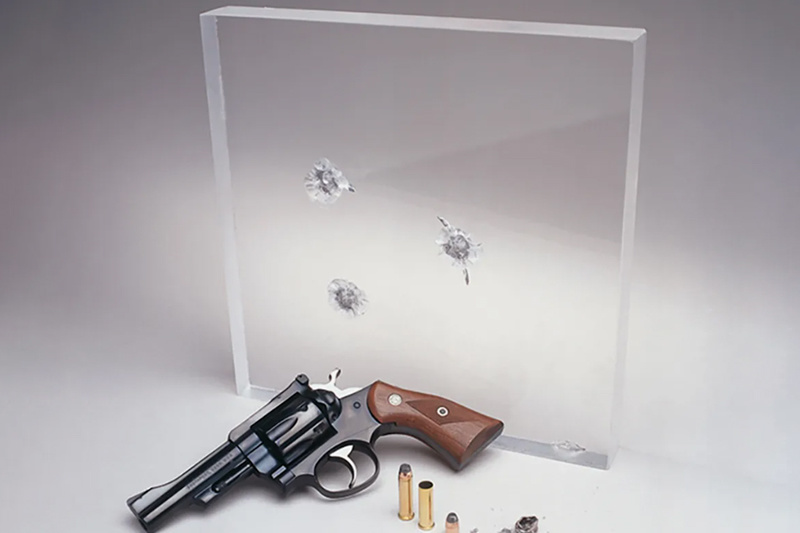Understanding the Advantages of Multi-Layer Bulletproof Glass in Modern Architecture
Aug 04,2025

Understanding the Advantages of Multi-Layer Bulletproof Glass in Modern Architecture
In today's world, safety and security have become paramount concerns in architectural design. One material that has gained significant attention in recent years is multi-layer bulletproof glass. This innovative glass not only offers unparalleled protection but also adds aesthetic value to modern buildings. In this article, we will explore the numerous advantages of multi-layer bulletproof glass, its applications in architecture, and why it is becoming a preferred choice for architects and builders alike.
Table of Contents
- What is Multi-Layer Bulletproof Glass?
- Advantages of Multi-Layer Bulletproof Glass
- Applications in Modern Architecture
- Comparing Different Types of Bulletproof Glass
- Sustainability Aspects of Multi-Layer Bulletproof Glass
- Cost Considerations in Installation
- The Future of Multi-Layer Bulletproof Glass in Architecture
- FAQs
What is Multi-Layer Bulletproof Glass?
Multi-layer bulletproof glass, often referred to as laminated glass, consists of multiple layers of glass and interlayers that are bonded together through a process of heat and pressure. This construction not only enhances its strength and durability but also provides the ability to absorb and disperse impact energy, making it an ideal choice for security applications. The layers typically include polycarbonate or other polymers that significantly increase resistance to ballistic threats.
Advantages of Multi-Layer Bulletproof Glass
Enhanced Safety Features
One of the primary advantages of multi-layer bulletproof glass is its exceptional safety features. This glass can withstand various threats, from small firearms to high-velocity projectiles. The multi-layer design allows it to absorb impacts without shattering, thus protecting the occupants of a building.
In high-risk areas, such as government buildings, banks, and retail stores, this glass provides an essential layer of security. Its use can deter criminal activities and enhance the overall safety of the environment.
Design Versatility
Multi-layer bulletproof glass is not only functional but also aesthetically pleasing. It can be customized to fit the design requirements of any building, allowing architects to integrate it seamlessly into their projects. Available in various thicknesses, colors, and finishes, it can enhance the visual appeal of facades, windows, and interior spaces.
Additionally, advancements in manufacturing technology have enabled the creation of bulletproof glass that resembles traditional glass, making it nearly indistinguishable from standard windows while still providing the necessary protection.
Energy Efficiency
Another advantage of multi-layer bulletproof glass is its potential for energy efficiency. Modern designs often incorporate low-emissivity coatings that reduce heat transfer, thereby improving insulation. This characteristic not only aids in maintaining a comfortable indoor environment but also lowers energy costs.
Incorporating bulletproof glass into a building's design can help achieve sustainability goals by reducing the reliance on heating and cooling systems.
Applications in Modern Architecture
Facades and Windows
Multi-layer bulletproof glass is increasingly used in the construction of building facades and windows. Its ability to withstand ballistic impacts makes it suitable for high-rise buildings, embassies, and other structures where security is a top priority. The glass can be designed to fit large panes, allowing for expansive views while ensuring safety.
In addition to security, the glass can also be treated for UV protection, reducing the fading of interior furnishings and offering additional comfort for occupants.
Interior Design Elements
Beyond exteriors, multi-layer bulletproof glass is gaining traction in interior design. Its use in conference rooms, reception areas, and even private offices promotes safety without sacrificing aesthetics. Glass partitions can create open, airy spaces while maintaining a level of privacy and security that traditional materials cannot provide.
Comparing Different Types of Bulletproof Glass
There are several types of bulletproof glass available, each designed for specific applications and threat levels. The most common types include:
- Polycarbonate Glass: Lightweight and highly impact-resistant, polycarbonate glass offers excellent protection but may scratch more easily than laminated glass.
- Laminated Glass: Composed of two or more layers of glass with interlayers, laminated glass provides superior protection against bullets while maintaining transparency.
- Tempered Glass: While not inherently bulletproof, tempered glass can be treated to enhance its strength and resilience.
Understanding the differences between these types is crucial for selecting the right material for specific architectural needs.
Sustainability Aspects of Multi-Layer Bulletproof Glass
As the construction industry becomes increasingly focused on sustainability, multi-layer bulletproof glass stands out as an eco-friendly option. Its durability means that buildings can maintain their security features without the need for frequent replacements, contributing to lower environmental impact over time.
Moreover, advancements in recycling technologies for glass are making it easier to repurpose materials, further enhancing its sustainability credentials. By choosing multi-layer bulletproof glass, architects and builders can align with global sustainability efforts while providing safety and security.
Cost Considerations in Installation
While the initial investment in multi-layer bulletproof glass may be higher than traditional glass options, the long-term benefits often outweigh the costs. The durability and low maintenance requirements of this glass can lead to cost savings over time, especially in high-security applications where durability is paramount.
Additionally, many insurance companies recognize the added security provided by bulletproof glass and may offer lower premiums for properties that utilize this material, further offsetting initial costs.
The Future of Multi-Layer Bulletproof Glass in Architecture
The future of multi-layer bulletproof glass in architecture looks promising, with continuous innovations in materials and designs. Researchers are exploring new composites that can enhance the strength and aesthetics of bulletproof glass, making it more accessible for various applications.
As urban environments evolve and the demand for security continues to grow, multi-layer bulletproof glass will play an integral role in shaping the architectural landscape of the future. Its combination of safety, design versatility, and energy efficiency makes it a compelling choice for modern buildings.
FAQs
1. What is the difference between bulletproof glass and standard glass?
Bulletproof glass is specifically designed to withstand ballistic impacts, while standard glass is not. Bulletproof glass consists of multiple layers that absorb and disperse energy, preventing shattering.
2. Can multi-layer bulletproof glass be used in residential buildings?
Yes, multi-layer bulletproof glass can be used in residential buildings, particularly in areas that require additional security, such as safe rooms or homes in high-risk neighborhoods.
3. How thick is multi-layer bulletproof glass?
The thickness of multi-layer bulletproof glass can vary depending on the level of protection required. Generally, it ranges from 0.5 inches to several inches thick, depending on the specifications.
4. Is bulletproof glass expensive?
The cost of bulletproof glass can be higher than standard glass, but it often provides long-term savings due to its durability and low maintenance requirements.
5. Can bulletproof glass be custom designed?
Yes, bulletproof glass can be customized in terms of thickness, color, and finish to fit specific architectural designs and aesthetic preferences.
Conclusion
In conclusion, multi-layer bulletproof glass represents a significant advancement in modern architecture, offering a unique blend of safety, design versatility, and energy efficiency. As the demand for secure buildings continues to rise, understanding the advantages of this innovative material becomes essential for architects, builders, and property owners alike. By incorporating multi-layer bulletproof glass into their designs, they can enhance safety without compromising on aesthetics, ensuring a secure and visually appealing environment for all users.
PREVIOUS:
Contact Us
E-mail: admin@jingtaibl.com
TEL: +86 18969476297 / +86 18067898952
Address: No.56, No.2 Donggang Road, Quzhou, Zhejiang Province






